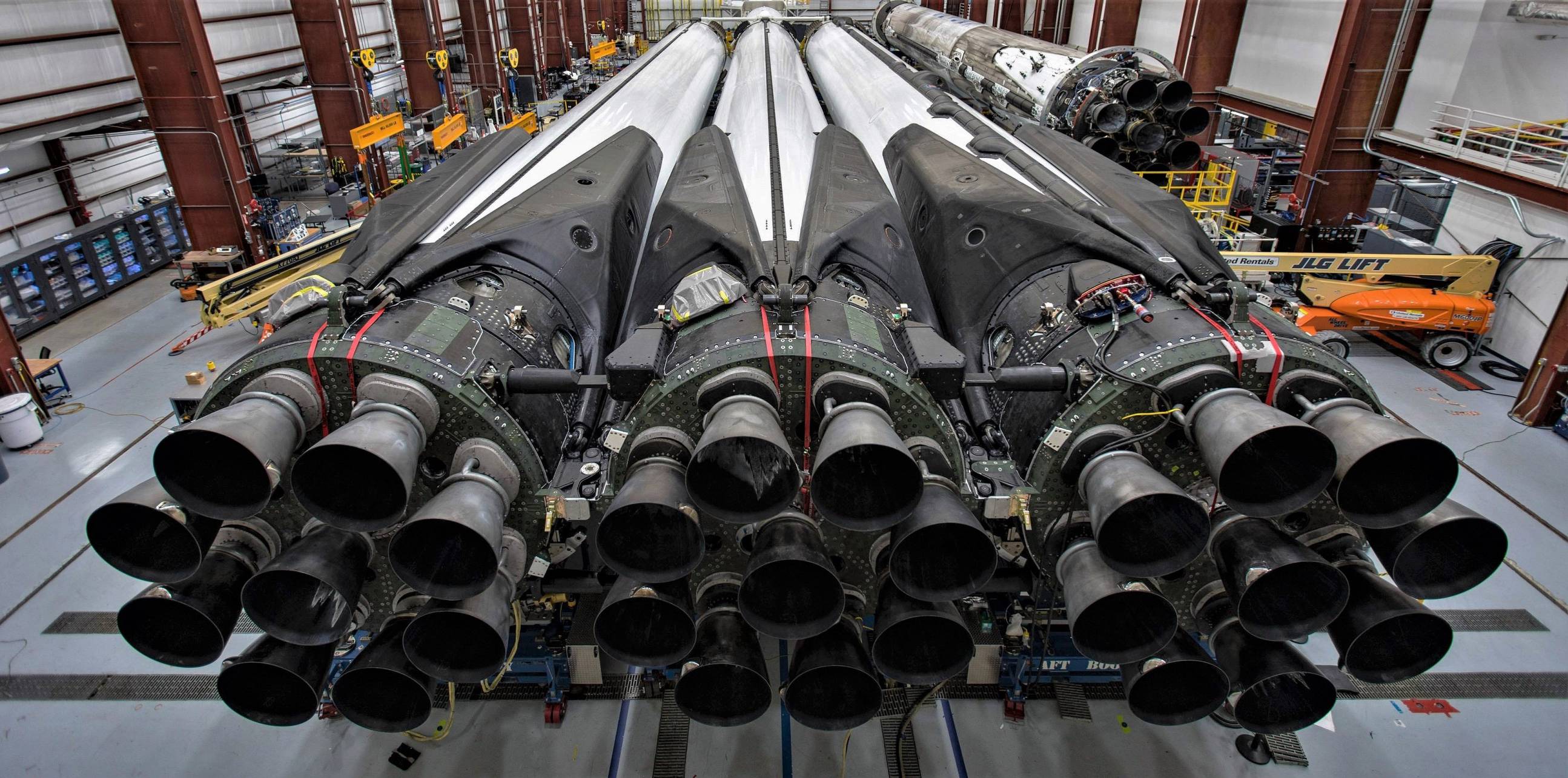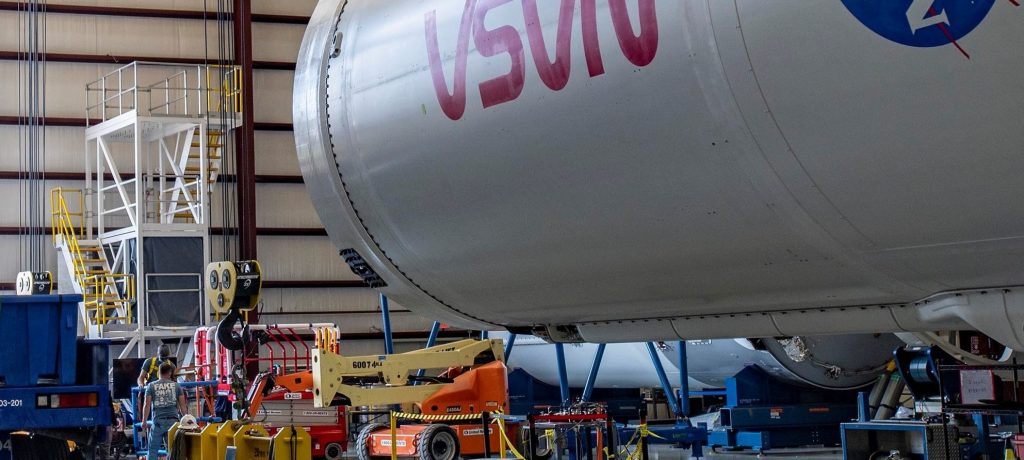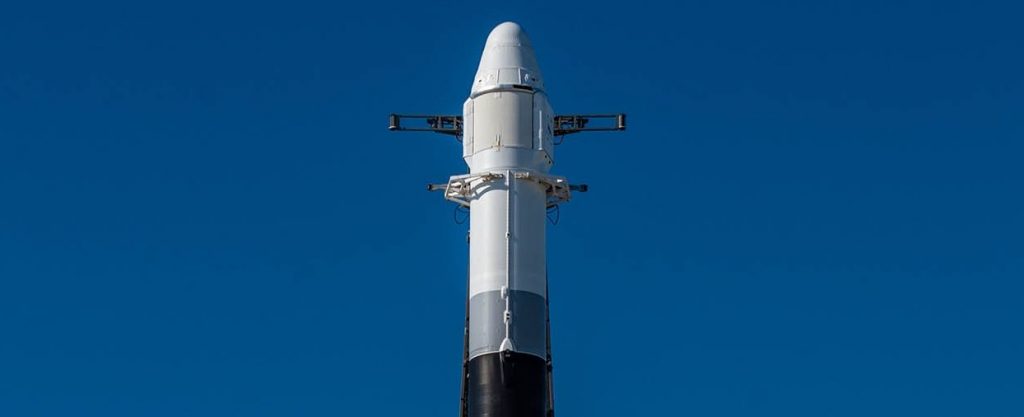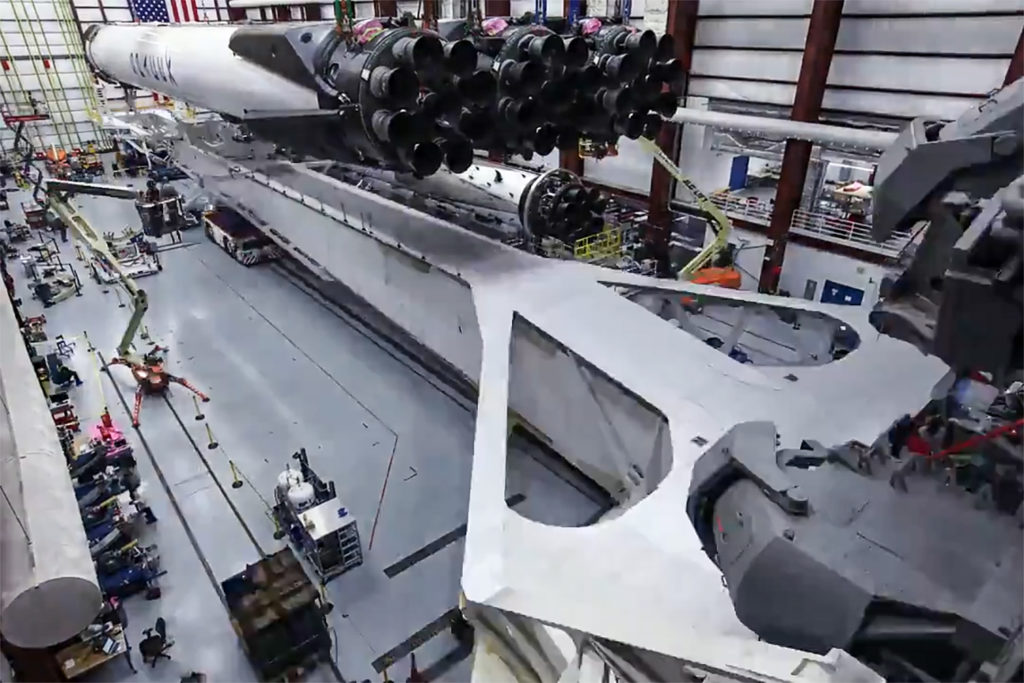

News
SpaceX’s first Falcon Heavy launch in three years eyes late-October liftoff
For the second time in 2022, SpaceX’s Falcon Heavy rocket has a firm launch date for the first time in more than three years.
Cursed by a seemingly relentless flood of delays impacting almost every one of the rocket’s payloads, Falcon Heavy made it within three or four months of ending its launch drought as recently as June 2022. At the time, the rocket was more or less ready to begin assembly, but NASA announced late that month that the Jet Propulsion Laboratory (JPL) and supplier Maxar had failed to finish qualifying software needed to power its Psyche spacecraft. Designed to journey to and enter orbit around the asteroid 16 Psyche, the complex trajectory required to reach it constrained the mission to a launch window sometime between August and October.
When JPL and Maxar were unable to properly test the spacecraft’s software in time for that window, they were forced to stand down and wait until the next earliest window, which begins in July 2023. That left Falcon Heavy with three more possible payloads to launch in 2022, but all three were chronically delayed and there was little reason to believe that even one of them would be ready to launch before 2023. However, Falcon Heavy’s single most delayed payload appears to have made a breakthrough, giving the most powerful rocket currently in operation at least one more shot at a 2022 launch.
Continuing an excellent series of reports tracking Falcon Heavy’s never-ending US military payload delays, Spaceflight Now broke the news with an official statement from the US Space Force, which confirmed that an unspecified industry partner had finally resolved payload problems that have delayed the military’s USSF-44 mission by two years. More importantly, the USSF spokesperson revealed a specific target of October 28th.
The US military has repeatedly offered implausible launch targets for USSF-44 with little to no official explanation for the mission’s delays, making it reasonable to appraise any specific launch date much like a boy crying wolf. But this particular target, announced within the same month as its date, is a bit more believable on its own.
Thankfully, it’s not on its own. On October 7th, SpaceX sent out an email confirming that Falcon Heavy is scheduled to launch USSF-44 sometime in October and asking members of the media to register for press site access and remote camera setup opportunities. It’s possible that the rocket or USSF-44 satellites will run into issues and trigger additional delays, but a press accreditation email is about as close as one can get to a believable guarantee that a secretive US military payload is on track for a SpaceX launch scheduled more than a week or so in the future.
The mission’s next major step forward will be the assembly of Falcon Heavy inside SpaceX’s main hangar at its NASA Kennedy Space Center LC-39A pad. Photos SpaceX shared last month and earlier this month of preparations for Crew-5, Falcon 9’s eighth successful astronaut launch, show that at least two of the four main stages that make up Falcon Heavy are already inside that hangar. One of two new Falcon Heavy side boosters was clearly spotted on September 30th.



The rocket’s expendable upper stage was also clearly visible in a September 23rd photo. Ordinarily, Falcon upper stages are nearly indistinguishable from each other, but the upper stage stored behind the Crew-5 upper stage in the foreground features a unique grey band around the bottom of its airframe. In July 2019, SpaceX tested another Falcon 9 upper stage with the same grey band, which a spokesperson explained was meant to improve the rocket’s longevity in orbit.
Long orbital coasts of six or more hours are necessary for some of the most challenging launch trajectories. Direct-to-geostationary launches are the most common type of mission to require long coast capabilities and are often demanded by the US military. The grey band’s purpose is to increase the amount of heating absorbed from sunlight to warm the liquid kerosene (RP-1) fuel contained within that part of the rocket. When it gets too cold, kerosene – which freezes at a much higher temperature than Falcon’s liquid oxygen oxidizer – becomes viscous and slush-like before it freezes solid. If ingested, slushy fuel would likely prevent ignition or destroy the upper stage’s Merlin engine.
USSF-44 will be SpaceX’s first direct geostationary launch attempt, explaining why the grey band has reappeared more than three years after its first test. Coincidentally, Falcon Heavy’s third and latest launch occurred in June 2019, just one month before that upper stage test. 40 months later, the rocket might finally launch again, and it will do so by attempting what is likely SpaceX’s most difficult customer mission to date. To enable the high performance required for the mission, USSF-44 will also intentionally expend a Falcon Heavy booster for the first time. The rocket’s two new side boosters will boost back to Florida and land side by side at LZ-1 and LZ-2, but its new center core will be expended after a single flight.

SpaceX has already finished converting Pad 39A’s mobile transporter/erector, which was previously set up for single-core Falcon 9 rockets. The T/E will eventually roll inside the pad’s integration hangar, confirming that Falcon Heavy has been fully assembled and is about to be installed on the structure. The rocket will then be rolled out to the pad and brought vertical for static fire testing, a process that will likely begin at least a week before the current October 28th launch target.
If testing is successful, Falcon Heavy will return to the hangar, have its fairing and USSF-44 payload installed, and roll out to the pad one last time. Stay tuned for updates on that ongoing process.
Elon Musk
Tesla Supercharger Diner food menu gets a sneak peek as construction closes out
What are you ordering at the Tesla Diner?

The Tesla Supercharger Diner in Los Angeles is nearing completion as construction appears to be winding down significantly. However, the more minor details, such as what the company will serve at its 50s-style diner for food, are starting to be revealed.
Tesla’s Supercharger Diner is set to open soon, seven years after CEO Elon Musk first drafted the idea in a post on X in 2018. Musk has largely come through on most of what he envisioned for the project: the diner, the massive movie screens, and the intended vibe are all present, thanks to the aerial and ground footage shared on social media.
We already know the Diner will be open 24/7, based on decals placed on the front door of the restaurant that were shared earlier this week. We assume that Tesla Optimus will come into play for these long and uninterrupted hours.
The Tesla Diner is basically finished—here’s what it looks like
As far as the food, Tesla does have an email also printed on the front door of the Diner, but we did not receive any response back (yet) about what cuisine it will be offering. We figured it would be nothing fancy and it would be typical diner staples: burgers, fries, wings, milkshakes, etc.
According to pictures taken by @Tesla_lighting_, which were shared by Not a Tesla App, the food will be just that: quick and affordable meals that diners do well. It’s nothing crazy, just typical staples you’d find at any diner, just with a Tesla twist:
Tesla Diner food:
• Burgers
• Fries
• Chicken Wings
• Hot Dogs
• Hand-spun milkshakes
• And more https://t.co/kzFf20YZQq pic.twitter.com/aRv02TzouY— Sawyer Merritt (@SawyerMerritt) July 17, 2025
As the food menu is finalized, we will be sure to share any details Tesla provides, including a full list of what will be served and its prices.
Additionally, the entire property appears to be nearing its final construction stages, and it seems it may even be nearing completion. The movie screens are already up and showing videos of things like SpaceX launches.
There are many cars already using the Superchargers at the restaurant, and employees inside the facility look to be putting the finishing touches on the interior.
🚨 Boots on the ground at the Tesla Diner:
— TESLARATI (@Teslarati) July 17, 2025
It’s almost reminiscent of a Tesla version of a Buc-ee’s, a southern staple convenience store that offers much more than a traditional gas station. Of course, Tesla’s version is futuristic and more catered to the company’s image, but the idea is the same.
It’s a one-stop shop for anything you’d need to recharge as a Tesla owner. Los Angeles building permits have not yet revealed the date for the restaurant’s initial operation, but Tesla may have its eye on a target date that will likely be announced during next week’s Earnings Call.
News
Tesla’s longer Model Y did not scale back requests for this vehicle type from fans
Tesla fans are happy with the new Model Y, but they’re still vocal about the need for something else.

Tesla launched a slightly longer version of the Model Y all-electric crossover in China, and with it being extremely likely that the vehicle will make its way to other markets, including the United States, fans are still looking for something more.
The new Model Y L in China boasts a slightly larger wheelbase than its original version, giving slightly more interior room with a sixth seat, thanks to a third row.
Tesla exec hints at useful and potentially killer Model Y L feature
Tesla has said throughout the past year that it would focus on developing its affordable, compact models, which were set to begin production in the first half of the year. The company has not indicated whether it met that timeline or not, but many are hoping to see unveilings of those designs potentially during the Q3 earnings call.
However, the modifications to the Model Y, which have not yet been officially announced for any markets outside of China, still don’t seem to be what owners and fans are looking forward to. Instead, they are hoping for something larger.
A few months ago, I reported on the overall consensus within the Tesla community that the company needs a full-size SUV, minivan, or even a cargo van that would be ideal for camping or business use.
Tesla is missing one type of vehicle in its lineup and fans want it fast
That mentality still seems very present amongst fans and owners, who state that a full-size SUV with enough seating for a larger family, more capability in terms of cargo space for camping or business operation, and something to compete with gas cars like the Chevrolet Tahoe, Ford Expedition, or electric ones like the Volkswagen ID.BUZZ.
We asked the question on X, and Tesla fans were nearly unanimously in support of a larger SUV or minivan-type vehicle for the company’s lineup:
🚨 More and more people are *still* saying that, despite this new, longer Model Y, Tesla still needs a true three-row SUV
Do you agree? https://t.co/QmbRDcCE08 pic.twitter.com/p6m5zB4sDZ
— TESLARATI (@Teslarati) July 16, 2025
Here’s what some of the respondents said:
100% agree, we need a larger vehicle.
Our model Y is quickly getting too small for our family of 5 as the kids grow. A slightly longer Y with an extra seat is nice but it’s not enough if you’re looking to take it on road trips/vacations/ kids sports gear etc.
Unfortunately we…
— Anthony Hunter (@_LiarsDice_) July 17, 2025
Had to buy a Kia Carnival Hybrid because Tesla doesn’t have a true 3 row vehicle with proper space and respectable range. pic.twitter.com/pzwFyHU8Gi
— Neil, like the astronaut (@Neileeyo) July 17, 2025
Agreed! I’m not sure who created this but I liked it enough to save it. pic.twitter.com/Sof5nMehjS
— 🦉Wise Words of Wisdom – Inspirational Quotes (IQ) (@WiseWordsIQ) July 16, 2025
Tesla is certainly aware that many of its owners would like the company to develop something larger that competes with the large SUVs on the market.
However, it has not stated that anything like that is in the current plans for future vehicles, as it has made a concerted effort to develop Robotaxi alongside the affordable, compact models that it claims are in development.
It has already unveiled the Robovan, a people-mover that can seat up to 20 passengers in a lounge-like interior.
The Robovan will be completely driverless, so it’s unlikely we will see it before the release of a fully autonomous Full Self-Driving suite from Tesla.
Energy
Tesla launches first Virtual Power Plant in UK – get paid to use solar
Tesla has launched its first-ever Virtual Power Plant program in the United Kingdom.

Tesla has launched its first-ever Virtual Power Plant program in the United Kingdom. This feature enables users of solar panels and energy storage systems to sell their excess energy back to the grid.
Tesla is utilizing Octopus Energy, a British renewable energy company that operates in multiple markets, including the UK, France, Germany, Italy, Spain, Australia, Japan, New Zealand, and the United States, as the provider for the VPP launch in the region.
The company states that those who enroll in the program can earn up to £300 per month.
Tesla has operated several VPP programs worldwide, most notably in California, Texas, Connecticut, and the U.S. territory of Puerto Rico. This is not the first time Tesla has operated a VPP outside the United States, as there are programs in Australia, Japan, and New Zealand.
This is its first in the UK:
Our first VPP in the UK
You can get paid to share your energy – store excess energy in your Powerwall & sell it back to the grid
You’re making £££ and the community is powered by clean energy
Win-win pic.twitter.com/evhMtJpgy1
— Tesla UK (@tesla_uk) July 17, 2025
Tesla is not the only company that is working with Octopus Energy in the UK for the VPP, as it joins SolarEdge, GivEnergy, and Enphase as other companies that utilize the Octopus platform for their project operations.
It has been six years since Tesla launched its first VPP, as it started its first in Australia back in 2019. In 2024, Tesla paid out over $10 million to those participating in the program.
Participating in the VPP program that Tesla offers not only provides enrolled individuals with the opportunity to earn money, but it also contributes to grid stabilization by supporting local energy grids.
-

 Elon Musk1 day ago
Elon Musk1 day agoWaymo responds to Tesla’s Robotaxi expansion in Austin with bold statement
-

 News1 day ago
News1 day agoTesla exec hints at useful and potentially killer Model Y L feature
-

 Elon Musk2 days ago
Elon Musk2 days agoElon Musk reveals SpaceX’s target for Starship’s 10th launch
-

 Elon Musk3 days ago
Elon Musk3 days agoTesla ups Robotaxi fare price to another comical figure with service area expansion
-

 News1 day ago
News1 day agoTesla’s longer Model Y did not scale back requests for this vehicle type from fans
-

 News1 day ago
News1 day ago“Worthy of respect:” Six-seat Model Y L acknowledged by Tesla China’s biggest rivals
-

 News2 days ago
News2 days agoFirst glimpse of Tesla Model Y with six seats and extended wheelbase
-

 Elon Musk2 days ago
Elon Musk2 days agoElon Musk confirms Tesla is already rolling out a new feature for in-car Grok
















